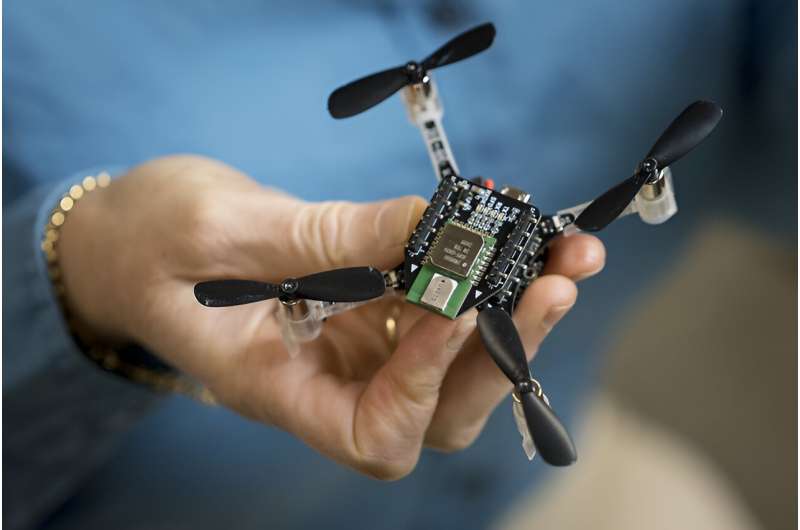This article has been reviewed according to Science X's editorial process and policies. Editors have highlighted the following attributes while ensuring the content's credibility:
fact-checked
trusted source
proofread
One person can supervise 'swarm' of 100 unmanned autonomous vehicles, research shows

Research involving Oregon State University has shown that a "swarm" of more than 100 autonomous ground and aerial robots can be supervised by one person without subjecting the individual to an undue workload.
The findings represent a big step toward efficiently and economically using swarms in a range of roles from wildland firefighting to package delivery to disaster response in urban environments.
"We don't see a lot of delivery drones yet in the United States, but there are companies that have been deploying them in other countries," said Julie A. Adams of the OSU College of Engineering.
"It makes business sense to deploy delivery drones at a scale, but it will require a single person be responsible for very large numbers of these drones. I'm not saying our work is a final solution that shows everything is OK, but it is the first step toward getting additional data that would facilitate that kind of a system."
The results, published in Field Robotics, stem from the Defense Advanced Research Project Agency' program known as OFFSET, short for Offensive Swarm-Enabled Tactics.
During the course of the four-year project, researchers deployed swarms of up to 250 autonomous vehicles—multi-rotor aerial drones, and ground rovers—able to gather information in "concrete canyon" urban surroundings where line-of-sight, satellite-based communication is impaired by buildings. The information the swarms collect during their missions at military urban training sites have the potential to help keep U.S. troops and civilians more safe.
Adams was a co-principal investigator on one of two swarm system integrator teams that developed the system infrastructure and integrated the work of other teams focused on swarm tactics, swarm autonomy, human-swarm teaming, physical experimentation and virtual environments.
"The project required taking off-the-shelf technologies and building the autonomy needed for them to be deployed by a single human called the swarm commander," said Adams, the associate director for deployed systems and policy at OSU's Collaborative Robotics and Intelligent Systems Institute.
"That work also required developing not just the needed systems and the software, but also the user interface for that swarm commander to allow a single human to deploy these ground and aerial systems."
Collaborators with Smart Information Flow Technologies developed a virtual reality interface called I3 that lets the commander control the swarm with high-level directions.
"The commanders weren't physically driving each individual vehicle, because if you're deploying that many vehicles, they can't—a single human can't do that," Adams said. "The idea is that the swarm commander can select a play to be executed and can make minor adjustments to it, like a quarterback would in the NFL.
"The objective data from the trained swarm commanders demonstrated that a single human can deploy these systems in built environments, which has very broad implications beyond this project."
Testing took place at multiple Department of Defense Combined Armed Collective Training Facilities. Each multi-day field exercise introduced additional vehicles, and every 10 minutes swarm commanders provided information about their workload and how stressed or fatigued they were.
During the final field exercise, featuring more than 100 vehicles, the commanders' workload levels were also assessed through physiological sensors that fed information into an algorithm that estimates someone's sensory channel workload levels and their overall workload.
"The swarm commanders' workload estimate did cross the overload threshold frequently, but just for a few minutes at a time, and the commander was able to successfully complete the missions, often under challenging temperature and wind conditions," Adams said.
More information: Robert Brown et al, Congestion Analysis for the DARPA OFFSET CCAST Swarm, Field Robotics (2023). DOI: 10.55417/fr.2023005




















